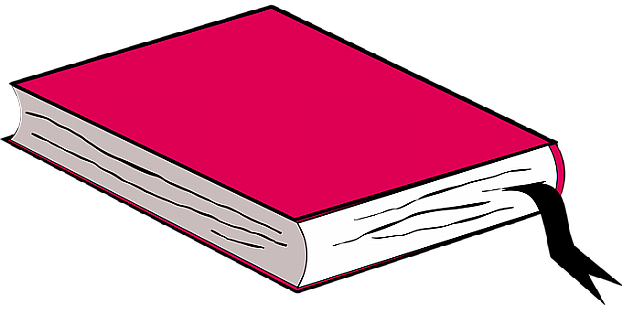Hill, A. P., Hall, H. K., Appleton, P. R., & Kozub, S. A. (2008). Perfectionism and burnout in junior elite soccer players: The mediating influence of unconditional self-acceptance. Psychology of Sport and Exercise, 9, ۶۳۰–۶۴۴٫
Hill, R.W., McIntire, K., & Bacharach, V.R. (1997). Perfectionism and the Big Five factors. Journal of Social Behavior & Personality, ۱۲, ۲۵۷–۲۷۰٫
Hodge, K., Lonsdale, C., & Y.Y.NG, J. (2008). Burnout in elite rugby: Relationships with basic psychological needs fulfillment. Journal of Sports Science, June; 26 (۸), ۸۳۵-۸۴۴٫
Hollender, M. H. (1978). Perfectionism, a neglected personality trait. Journal of Clinical Psychiatry, 39, 384.
Holly, F. G., Barnard, R. J., Rosenthal, M., Applegate, E., & Pritikin, N. (1989). Triathlete characterization and response to prolonged strenuous competition. Medicine and Science in Sport and Exercise, 18, ۱۲۳-۱۲۷٫
Hooper, S., MacKinnon, L., & Wilson, B. (1995). Biomechanical responses of elite swimmers to staleness and recovery. Australian Journal of Science and Medicine in Sport, 27 (۱), ۹-۱۳٫
Horney, K. (1950). Neurosis and human growth. New York: Norton.
Israel, S. (1976). Problems of overtraining from an internal medical and performance physiological standpoint. Medicine and Sport, 16 (۱), ۱۲-۱٫
- Egan, S., P. Piek, J., J. Dyck, M., & S. Rees, C. (2007). The role of dichotomous thinking and rigidity in perfectionism. Behaviour Research and Therapy, 45,1813–۱۸۲۲٫
Jackson, S.A., & Csikszentmihalyi, M. (1999). Flow in Sports. Champaign, IL: Human Kinetics.
Jeukendrup, A. E., Hesselink, M. K., Snyder, A. C., Kuipers, H., & Keizer, H. A. (1992). Physiological changes in male competitive cyclists after two weeks of intensified training. International Journal of Sports Medicine, 13 (۷), ۵۳۴-۵۴۱٫
Kelley, B. C. (1994). A model of stress and burnout in collegiate coaches: Efects of gender and time of season. Research Quarterly for Exercise and Sport, 65, 48-58.
Kellmann, M., & Gunther, K. (2000). Changes in stress and recovery in elite rowers during preparation for the Olympic Games. Medicine and Science in Sports and Exercise, ۳۵, ۶۷۶–۶۸۳٫
Kentta, G., Hassman. P. (1998). Overtraining and recovery: A conceptual model. Sport med, 26 (۱), ۱-۱۶٫
Kim, H. J., Shin, K. H., & Swanger, N. (2009). Burnout and engagement: A comparative analysis using the Big Five personality dimensions. International journal of hospitality management, 28 (۱),۹۶-۱۰۴٫
Kobori, O., Hayakawa, M., Tanno, Y. (2009). Do perfectionists raise their standards after success? An experimental examination of the revaluation of standard setting in perfectionism. Journal of Behavior Therapy Journal of Behavior Therapy, 40, 515-521.
Koivula, N., Hassmen, P., & Fallby, J. (2002). Self-esteem and perfectionism in elite athletes: effects on competitive anxiety and self-confidence. Personality and Individual Differences, 32, ۸۶۵-۸۷۵٫
Koustelios, A. (2001). Burnout among Greek sport centre employees. Sport Management Review, 4, ۱۵۱-۱۶۳٫
Koutedakis, Y., & Sharp, N. C. (1998). Seasonal variations of injury and overtraining in elite athletes. Clinical Journal of Sport Medicine : Official Journal of the Canadian Academy of Sport Medicine, 8 (۱), ۱۸-۲۱٫
Kowal, A., & Pritchard, D. (1990). Psychological characteristics of children who suffer from headache: A research note. Journal of Child Psychology and Psychiatry and Allied Disciplines, ۳۱, ۶۳۷–۶۴۹٫
Kreider. R. B., Fry, A. C., & O’Toole, M. L. (Eds.). (1998). Overtraining in sport (1st ed.). Champaign, IL: Human Kinetics.
Kubitz, K. K., Landers, D. M., Petruzzello, S. J., & Han, M. W. (1996). The effect of acute and chronic exercise on sleep. Sport Medicine, 21 (۴), ۱۱۲-۱۱۷٫
Kuipers, H, & Keizer, H. A. (1988). Overtraining in elite athlets: Review and directions for the future. Sport Med, 6 (۲), ۷۹-۹۲٫
Lac, G., & Maso, F. (2004). Biological markers for the follow-up of athletes throughout the training season. Pathologie-Biologie, 52 (۱), ۴۳-۴۹٫
Lai, C., & S. Wiggins, M. (2003). Burnout perceptions over time in NCAA division I soccer players, EBSCO publishing.
Lehman, M. J., Lormes, W., Opitz-Gress, A., Steinacker, J. M., Netzer, N., Foster, C., & et al. (1997). Training and overtraining: An overview and experimental result in endurance sports. Journal of Sports Medicine, physiology and fitness, 37, 7-17.
Lehmann, M., Dickhuth, H. H., Gendrisch, G., Lazar, W., Thum, M., & Kaminski, R., et al. (1991). Training & overtraining: A prospective, experimental study with experienced middle- and long-distance runners. International Journal of Sports Medicine, 12 (۵), ۴۴۴-۴۵۲٫
Lehmann, M., Foster, C., Dickhuth, H. H., & Gastmann, U. (1998). Autonomic imbalance hypothesis and overtraining syndrome. Medicine and Science in Sports and Exercise, 30 (۷), ۱۱۴۰-۱۱۴۵٫
Lehmann, M., Foster, K., & Keul, J. (1993). Overtrainig in endurance athelts: A brief review. Medicine & Science in Sport & Exercise, 25 (۷), ۸۵۴-۸۶۲٫
Lemyre, P. N., C. Roberts, G. & Stray-Gundersen, J. (2007). Motivation, overtraining, and burnout: Can self-determined motivation predict overtraining and burnout in elite athlets? European Journal of Sport Science, 7 (۲), ۱۱۵-۱۲۶
Lemyre, P. N., Hall, H. K., & Roberts, G. C. (2008). A social cognitive approach to burnout in elite athletes. Scandinavian Journal of Medicine & Science in Sports, ۱۸, ۲۲۱–۲۲۴٫
Lonsdale, C., Hodge, K., & Jackson, S. A. (2007). Athlete engagement: II. Development and initial validation of the Athlete Engagement Questionnaire. International Journal of Sport Psychology, 38, ۴۷۱–۴۹۲٫
Lonsdale, C., Hodge, K., & Rose, E. (2009). Athlete burnout in elite sport: A self-determination perspective. Journal of Sport Science, 27 (۸), ۷۸۵-۷۹۵٫
Lunders, D. M., & Petruzzello, S. J. (1994). Physical activity fitness and anxiety. Champagin, IL: Human Kinetics Publisher.
-
- Dunkley, D., R. Blankstein, K., M. Masheb, R., & M. Grilo, C. (2006). Personal standards and evaluative concerns dimensions of “clinical” perfectionism: A reply to Shafran et al. (2002, 2003) and Hewitt et al. (2003). 44 (1), 63-84.
-
- Kwan, B. & D. Bryan, A. (2010). Affective response to exercise as a component of exercise motivation: Attitudes. Norms, self-efficacy, and temporal stability of intentions. Psychology of Sport and Exercise, 11, ۷۱-۷۹٫
-
- Marcello, B. (2006). Overtraining in sport: Physiological, psychological and performance effecte of participation in division 1 competitive softball.
- V. Geelen, S., Sinnema, G., J.M. Hermans, H., & Kuis, W. (2007). Personality and chronic fatigue syndrome: Methodological and conceptual issues. Clinical Psychology Review, 27,885-903.
MacKinnon, L. T. (2000). Special feature for the olympics: Effects of exercise on the immune system: Overtraining effects on immunity and performance in athletes. Immunology and Cell Biology, 78 (۵), ۵۰۲-۵۰۹٫
Mackinnon, L. T., & Hooper, S. L. (1996). Plasma glutamine and upper respiratory tract infection during intensified training in swimmers. Medicine and Science in Sports and Exercise, 28 (۳), ۲۸۵-۲۹۰٫
Mackinnon, L. T., Hooper, S. L., Jones, S., Gordon, R. D., & Bachmann, A. W. (1997). Hormonal, immunological, and hematological responses to intensified training in elite swimmers. Medicine and Science in Sports and Exercise, 29 (۱۲), ۱۶۳۷-۱۶۴۵٫
Magnusson, A. E., Nias, D. K. B., & White, P. D. (1996). Is perfectionism associated with fatigue? Journal of Psychosomatic Research, 41, 377–۳۸۳٫
Martin, J. J., Kelley, B., & Eklund, R. C. (1999). A model of stress and burnout in male high school athletic directors. Journal of Sport & Exercise Psychology, 21, 280-294.
Martin, T. R., Flett, G. L., Hewitt, P. L., Krames, L., & Szanto, G. (1996). Personality correlates of depression and health symptoms: A test of a self-regulation model. Journal of Research in Personality, ۳۱, ۲۶۴–۲۷۷٫
Martinent, G., & Ferrand, C. (2007). A cluster analysis of precompetitive anxiety: Relationship with perfectionism and trait anxiety. Personality and Individual Differences, 43, ۱۶۷۶–۱۶۸۶٫
Maslach, C., & Leiter, M. (2008). Early predictors of job burnout and engagement. Journal of Applied Psychology, 93 (۳), ۴۹۸-۵۱۲٫
McCrae, R. R., & John, O. P. (1992). An introduction to the Five-Factor Model and its applications. Journal of Personality, ۶۰, ۱۷۵–۲۱۵٫
McGrath, A., Reid, N., Boore, J. (2003). Occupational stress in nursing. Int J Nurs Stud, 40, 555-65.
Meehan, H. (2002). The over-training syndrome. The Coach, S-817892, 41-46.
Meeusen, R., Duclos, M., Gleeson, M., Rietjens, G., Steinacker, J., & Urhausen, A. (2006). Prevention, diagnosis and treatment of the Overtraining Syndrome. European Journal of Sport Science, 6 (۱), ۱-۱۴٫


